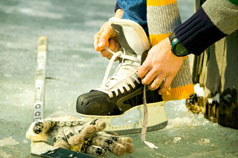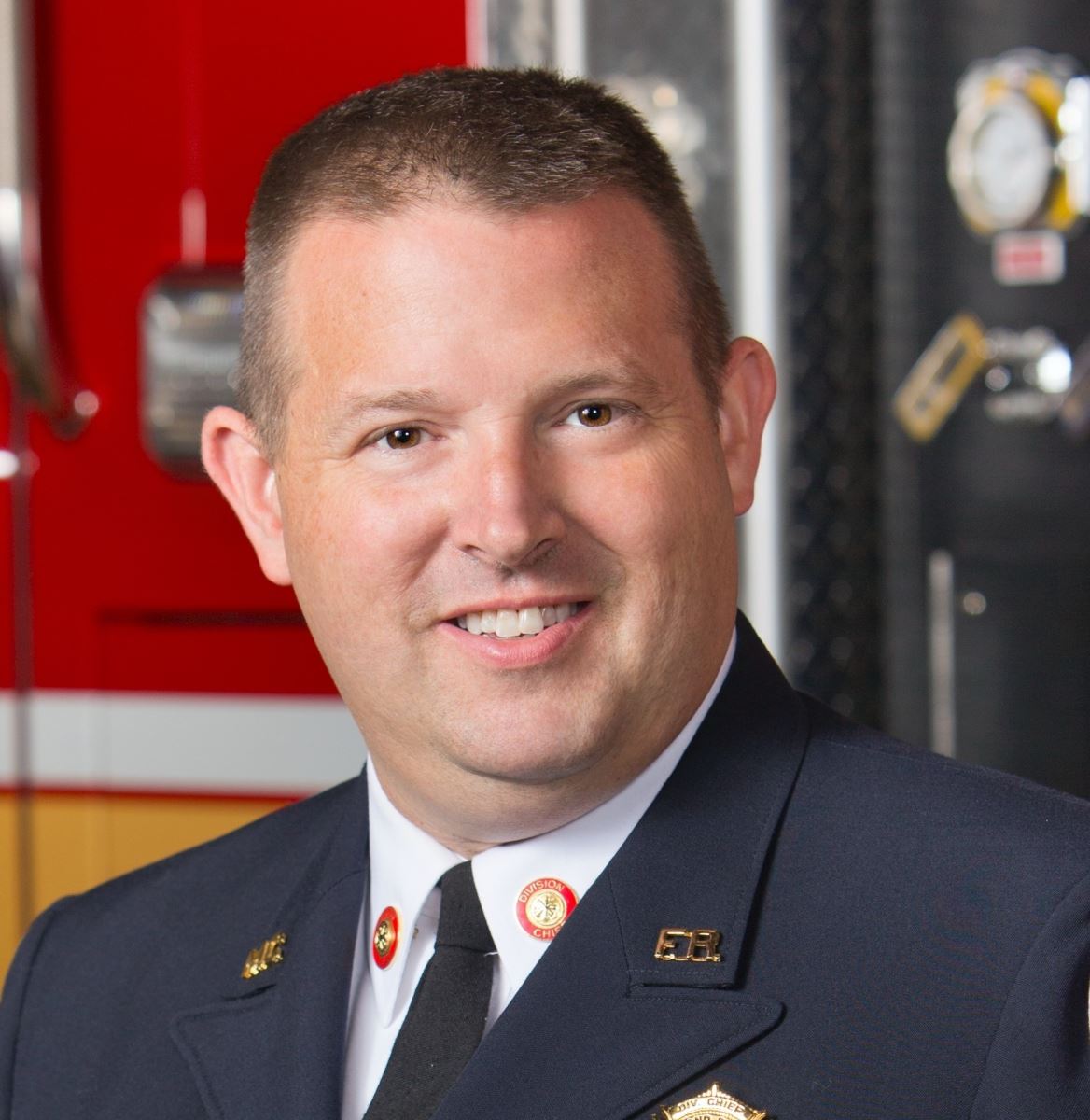Knowing what to do in the event of a fire is particularly important for older adults. Older adults are the fastest growing segment of the population and also one of the groups at highest risk for fire death and injury. Mobility and reaction times may be slowed; the senses of sight, hearing and smell may be diminished and medications may increase drowsiness, confusion or disorientation. At age 65, people are TWICE as likely to be killed or injured by fires. By age 75, people are nearly FOUR times as likely to die in a fire and over the age of 85? The risk of dying in a fire is increased FIVE times.
If a fire started in your home, would you be able to get out in time? Increase your chances of survival by reviewing these safety tips and remember, having working smoke alarms double your chances of surviving a home fire.
Why are Older Adults at Risk?
- Conditions associated with the aging process place older adults at increased risk for fire injury and death. Chronic illness, decreased mobility, health, sight, and hearing may limit a person's ability to take the quick action necessary to escape during a fire emergency.
- Depending on physical limitations, many of the actions an individual can take to protect themselves from the dangers of fire may require help from a caregiver, neighbor or other source.
- Decreased healing mechanisms. As a result, older adults tend to die from smaller burns, have longer hospital stays and require more time to recuperate from burn injuries.
- Many medications prescribed to treat the ailments of the elderly may cause confusion and fatigue.
By practicing a few simple fire safety tips, you can greatly reduce your chances of experiencing a fire:
Install and Maintain Smoke Alarms.
The single most important step you can take to save your life during a fire is to install a smoke alarm that suits your needs. A working smoke alarm can make a vital difference in the event of a fire and may reduce the risk of dying in a fire by as much as 60 percent. Install working smoke alarms on every level of your home and in sleeping areas. A working smoke alarm can alert you to the presence of deadly smoke while there is still time to escape. Test and dust each smoke alarm monthly and change the batteries at least once a year. Change the battery immediately if the unit starts making a "chirping" sound alerting you to a low battery.
It is estimated that one-third of those between the ages of 65 and 75, and one-half of those over 75 have some degree of hearing loss. Deaf and hard of hearing persons cannot rely on traditional audible smoke alarms, but can rely on a vibrating or visual alarms equipped with strobe lights. If you are hearing-impaired, install an alarm that alerts using these signals. Ask friends, family members, building managers or call the Montgomery County Fire and Rescue Service at 240-777-2467 to install and test the batteries in your smoke alarm if it is hard to reach or to get information on smoke alarms for the hearing impaired.
Smoking is the leading cause of fire-related deaths in the United States.
If you smoke, do it with care. Many fires are started when ashes or cigarette butts fall onto couches, chairs, wooden decks or in mulch. Ashes can smolder for hours before re-igniting.
- Never smoke in bed, while drowsy, or while under the influence of medication or alcohol.
- Use large, deep ashtrays for smoking debris and let the contents cool and douse with water before you dispose of them.
- Put ashtrays in the sink, fill with water, and let it sit overnight before you dispose of the contents. Or, dispose of cigarettes and matches in a metal container, such as a coffee can with a lid, and let it cool overnight.
- Check furniture for any smoldering cigarette butts and ashes before going to bed.
Pay Attention to Your Cooking.
The leading cause of home fires and home fire injuries is careless cooking. Most kitchen fires start because cooking food has been left unattended. Prevent fires and burns by being watchful and alert when you cook, keeping pot handles turned inward, not overheating food (especially fats and oils) and keeping children and pets at least three feet away from the stove. The area around the stove should be kept clear of food packaging, dish towels, newspapers, curtains, cabinets and paper or plastic bags that can easily ignite.
Never lean over a hot burner and wear short or tight-fitting sleeves when cooking to prevent clothing from igniting. Always use pot holders and oven mitts when handling hot pots and pans to prevent burns.
Heat Your Home Safely.
Have a professional service all heating equipment annually. Keep combustibles and anything that can burn or melt away from all heaters, furnaces, fireplaces and water heaters. Use your range or oven for cooking only - never to heat your home.
Hundreds of fires start each year when things that burn, such as curtains, clothing, bedding, gasoline, or paint solvents are placed too close to heaters, furnaces, wood stoves, fireplaces, or water heaters. Store flammable liquids like cleaning solvents and gasoline outside of your home. Have at least three feet of clearance in all directions around portable/space heaters. Use the proper fuel for all heating equipment. Change filters in furnaces monthly. Keep chimneys clean. To prevent scalds, set the temperature of your water heater no higher than 120 degrees. All heating devices should be checked by a professional.
Practice Electrical Safety.
Have a professional electrician inspect your home's electrical wiring system at least every 10 years, and make recommended repairs. Never overload the electrical system. Plug each appliance directly into its own outlet and avoid using extension cords. Have an electrician install ground fault circuit interrupters (GFCIs) in rooms where water may be present. Install and maintain electrical appliances according to the manufacturers' instructions.
Homes more than 40 years old are three times more likely to catch on fire from electrical causes than homes 11 to 20 years old. That's because older wiring may not have the capacity to safely handle newer appliances and equipment and may not incorporate updated safety features. Ground fault circuit interrupters (GFCIs) are important electrical safety devices that offer superior protection against dangerous electric shock and also may prevent some electrical fires. Have GFCIs installed in bathroom and kitchen circuits and in other locations where water and dampness may be present. Call a professional electrician to make sure you have the proper fuses, find reasons for blown fuses and tripped circuit breakers, replace old or damaged outlets and install more outlets if needed. You are more likely to overload electrical outlets if you use more than one high-wattage appliance on a circuit at a time. Extension cords are meant for temporary use only and should be unplugged when not in use. If you see frayed cords on older appliances, have the cord replaced or; better yet, replace the appliance altogether.
Keep Matches and Lighters Away from Children.
Children and fire - a dangerous, and sometimes deadly, mix. Store matches and lighters in a locked drawer or a high cabinet when you have young visitors in your home. Using lighters that are child-resistant can prevent deaths and injuries.
Use Candles Safely.
As decorative candles have become increasingly popular, candle fires have also increased. If you light candles, keep them away from children and pets, from curtains and furniture, and extinguish them before you leave the room or go to bed. Make sure candles are in sturdy holders that won't tip over and are made of non-flammable material.
Know What to Do in Case of a Fire.
Practicing how you would escape a fire before it strikes will enable you to get out faster. Getting out of your own home sounds easy, but your home can look very different if it's full of smoke. Fire Drills are a good opportunity to make sure that everyone is able to hear and respond to smoke alarms.
- Draw a layout of your house marking all windows and doors. Plan two routes out of each room and practice your plan.
- Designate a meeting place outside and take attendance. Get out and stay out. Never go back into a burning or smoky building.
- Remember to escape first, then call 911. Keep a pair of slippers, eyeglasses and a flashlight by your bed at night. Once you hear the smoke alarm, act quickly and escape.
If you use a wheelchair or walker, or otherwise might have a problem escaping from a fire, discuss your escape plans ahead of time with your family, your building manager and neighbors. Let them know about your special circumstances and ask them to help plan the best escape routes for you. A full fire safety plan covers more than just what to do if the worst happens. It covers prevention and detection too.
The Montgomery County Fire and Rescue Service sponsors a FREE smoke alarm program for qualifying senior citizens, the disabled and low-income home owners of Montgomery County, Maryland. Please contact us at 240-777-2476 for information.




















